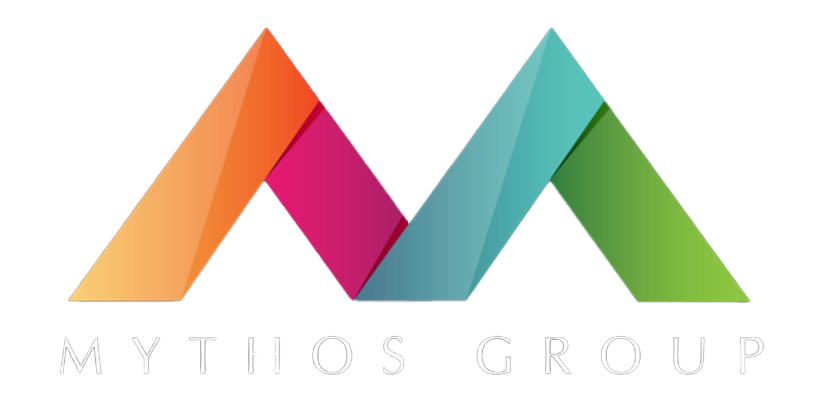How countries are weaponizing AI rules to steal market share and reshape global tech leadership.
The most consequential business battle of 2025 is not happening in boardrooms or on trading floors. It is unfolding in regulatory offices from Brussels to Singapore to Dubai, where governments are wielding AI regulations as economic weapons to lure companies, talent, and investment away from competitors. While executives focus on technology, countries are reshaping the global AI landscape through strategic regulatory positioning that is creating winners and losers worth billions.
The stakes could not be higher. With AI revenue projected to grow from $196.63 billion in 2023 to over $2 trillion by 2030, regulatory frameworks are not just about compliance — they are determining which countries capture this unprecedented economic opportunity. Smart governments have realized that the right regulatory approach can create competitive advantages that traditional economic incentives simply cannot match.
The EU’s Strategic Miscalculation
The European Union fired the first shot in February 2025 when its AI Act prohibitions took effect, creating fines up to €35 million or 7% of global annual turnover for non-compliance. What appeared to be regulatory leadership is transforming into an economic miscalculation. The immediate consequence: a coalition of over 110 organizations with $3 trillion in market capitalization — including Mistral, Airbus, ASML, and Siemens Energy — publicly demanding a two-year enforcement delay.
The business exodus has already begun. Companies are discovering that EU AI regulations create operational complexity that makes innovation prohibitively expensive and time-consuming. The regulations’ extraterritorial reach means any AI system with outputs in the EU faces compliance requirements, regardless of where the company operates. For global AI companies, this creates a stark choice: build separate systems for Europe or relocate operations to more accommodating jurisdictions.
The most revealing indicator of regulatory failure is capital flight. Venture capital flows into EU AI startups have stagnated while investment in AI-friendly jurisdictions has accelerated dramatically. European AI companies are increasingly establishing operations elsewhere for growth capital and operational flexibility. The EU’s attempt at regulatory leadership has become a competitive liability, proving that being first to regulate does not guarantee being first to benefit economically.
Singapore’s Billion-Dollar Attraction Engine
While Europe restricts, Singapore attracts with surgical precision. The city-state has committed over $1 billion over five years specifically to AI compute, talent, and industry development — but the real competitive weapon is regulatory flexibility. Singapore’s approach creates what industry leaders call “regulatory arbitrage,” where the speed and clarity of approvals become decisive competitive advantages.
The economic results demonstrate successful regulatory positioning. Singapore’s AI market is projected to reach $4.64 billion by 2030, growing at 28.10% annually — nearly double the global average. More strategically important, 67% of businesses in Singapore rank AI as their top technology investment for 2025. The regulatory environment enables this by providing clear guidelines without the operational restrictions that constrain competitors elsewhere.
Singapore’s talent strategy amplifies its regulatory advantages. Singapore workers are the world’s fastest at adopting AI skills, and the government’s regulatory clarity makes the country more attractive for AI professionals who want to work on cutting-edge projects without regulatory uncertainty limiting their impact. This creates a virtuous cycle where regulatory clarity attracts talent, which attracts investment, which reinforces Singapore’s position as a preferred jurisdiction.
The UAE’s Regulatory Sandbox Revolution
The United Arab Emirates has implemented the most aggressive approach to regulatory positioning, essentially offering to serve as the world’s “regulatory sandbox” for AI testing, as OpenAI CEO Sam Altman observed. This is not merely marketing positioning — it is supported by massive investment and strategic partnerships that create genuine competitive advantages for AI companies choosing the UAE as their operational base.
The economic metrics validate the UAE’s strategy. The country ranked fifth globally on Stanford University’s AI vibrancy index in 2024, driven by regulatory frameworks designed specifically to accelerate AI deployment rather than constrain it. Revenue from AI products and services in the UAE is expected to increase from $5.22 billion to $46.33 billion over five years — a 43.9% compound annual growth rate that reflects both market opportunity and regulatory competitive advantage.
Microsoft’s $1.5 billion investment in UAE-based G42 demonstrates how regulatory positioning translates directly into capital flows and strategic partnerships. The investment enables AI development and deployment with regulatory certainty that would be impossible in more restrictive jurisdictions. Even more strategically, the UAE is positioning itself as the gateway for AI companies wanting to serve global markets without the regulatory complexity of operating from highly regulated jurisdictions.
The Compliance Cost Warfare Strategy
The most sophisticated form of regulatory warfare involves designing compliance requirements that systematically favor certain types of companies over others. The EU’s approach creates fixed compliance costs that disproportionately burden smaller companies while barely affecting technology giants with existing legal and technical infrastructure. This is not accidental — it represents regulatory design that creates competitive barriers favoring established players while stifling innovation from new entrants.
The practical impact is significant and measurable. A startup developing AI tools faces substantially the same basic compliance requirements as Google or Microsoft, but lacks the legal and technical infrastructure to handle complex regulatory requirements efficiently. The result is that regulatory complexity becomes a barrier to entry that protects incumbents while constraining innovation — the opposite of what effective regulation should achieve.
Conversely, countries like Singapore and the UAE design regulatory frameworks that lower compliance costs and accelerate approval processes while maintaining appropriate oversight. This creates competitive advantages for companies choosing these jurisdictions, while simultaneously disadvantaging competitors operating under more burdensome regulatory regimes. For AI companies handling massive datasets and requiring rapid iteration, these operational differences translate into competitive advantages worth millions in reduced costs and faster time-to-market.
The data protection requirements illustrate this dynamic perfectly. While the EU requires complex data localization and processing restrictions, Singapore and the UAE offer streamlined approaches that achieve similar privacy protection with significantly lower operational overhead. These differences are not theoretical — they represent real competitive advantages that accumulate over time.
Strategic Implications For Executive Decision-Making
The regulatory positioning phenomenon creates immediate strategic imperatives for AI companies and executives making critical location decisions. The choice of jurisdiction now affects everything from time-to-market and operational costs to access to talent and capital markets. Companies that understand and leverage regulatory arbitrage can create sustainable competitive advantages, while
those that ignore these dynamics risk systematic disadvantages.
The most sophisticated AI companies are developing what industry leaders call “regulatory portfolio” strategies — maintaining operations in multiple jurisdictions to optimize for different competitive advantages while managing regulatory risk. This might involve research and development in regulatory sandboxes like the UAE, talent acquisition in AI-friendly markets like Singapore, and customer deployment through the most appropriate regulatory framework for each target market.
For executives, regulatory positioning must become a core component of AI strategy rather than an afterthought handled by compliance teams. The jurisdictions chosen for AI development and deployment can determine competitive success as much as technology choices or business model decisions. The window for establishing these advantages is narrowing as more companies recognize regulatory arbitrage opportunities and the competitive benefits diminish accordingly.
Companies that establish operations in advantageous jurisdictions early can lock in benefits through talent acquisition, partnership development, and market positioning that becomes increasingly difficult for later entrants to replicate. This creates first-mover advantages that compound over time, as regulatory frameworks become more established and competition for optimal positioning intensifies.
The Accelerating Competition For AI Advantage
The regulatory wars are intensifying rapidly as countries realize that AI regulations directly affect their long-term economic competitiveness and technological sovereignty. The UAE’s private sector AI investments are expected to reach $91 billion by 2031, driven significantly by regulatory advantages that make the country more attractive for AI investment than competing jurisdictions with more restrictive approaches.
The competitive dynamic is forcing rapid responses from other countries. Traditional regulatory approaches focused on restriction and control are giving way to innovation-friendly frameworks specifically designed to attract AI investment and talent. Countries that fail to adapt quickly risk becoming regulatory backwaters that repel precisely the kind of high-value AI activity they need for sustained economic growth and technological competitiveness.
The geopolitical implications extend far beyond economics. As the United States and China compete for AI dominance, smaller countries like Singapore and the UAE are establishing influential positions by offering regulatory advantages that neither superpower can easily replicate due to their size and political complexity. This creates opportunities for companies to leverage regulatory competition for sustained competitive advantage while contributing to a more distributed global AI ecosystem.
The next eighteen months will prove decisive in determining which regulatory approaches succeed in attracting AI investment and talent on a sustained basis. Companies that position themselves strategically during this critical window can establish competitive advantages that compound significantly over time. Those that remain passive or slow to respond risk finding themselves at systematic disadvantages as regulatory competition fundamentally reshapes the global AI competitive landscape.
Executive Action Framework
For leaders navigating this transformed landscape, regulatory considerations must be elevated from compliance afterthoughts to strategic imperatives that inform core business decisions. The regulatory environment chosen for AI operations will increasingly determine competitive outcomes, making jurisdiction selection as important as technology platform or talent acquisition decisions.
Immediate Assessment Requirements: Audit current AI operations across all jurisdictions for regulatory risk exposure and competitive positioning opportunities. Identify specific regulatory arbitrage possibilities in key markets based on business priorities and growth objectives. Develop comprehensive jurisdiction selection criteria that balance regulatory advantages with operational requirements and strategic goals.
Strategic Positioning Initiatives: Establish research and development operations in regulatory-friendly environments that accelerate innovation cycles and reduce compliance overhead. Create sophisticated compliance frameworks for restrictive markets that minimize operational impact while ensuring full regulatory adherence. Build strategic partnerships that leverage regulatory advantages while providing optionality for future jurisdictional changes.
Risk Management Protocols: Implement comprehensive monitoring systems for regulatory developments across all key markets and competitive jurisdictions. Prepare detailed contingency plans for regulatory changes that could affect operational efficiency or competitive positioning. Develop internal expertise in cross-border AI deployment that enables rapid response to regulatory opportunities and threats.
The AI regulation wars represent more than compliance challenges — they are fundamentally reshaping where innovation occurs, where talent concentrates, and where economic value gets created in the global AI economy. For executives, understanding and strategically leveraging regulatory arbitrage is no longer optional. It has become a competitive necessity that will determine success or failure in the AI-driven economy of the next decade.
Ready to navigate the regulatory landscape strategically? Mythos Group helps executives develop sophisticated location strategies that leverage regulatory advantages for sustainable competitive positioning in the global AI economy.







